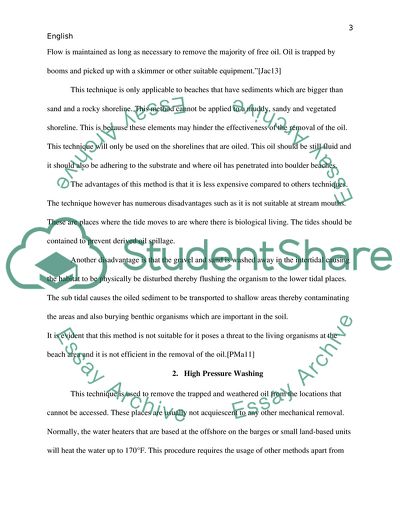Cite this document
(Oil Spill Response and Cleanup Techniques Case Study, n.d.)
Oil Spill Response and Cleanup Techniques Case Study. Retrieved from https://studentshare.org/environmental-studies/1873399-techniques-for-cleaning-up-oil-spills
Oil Spill Response and Cleanup Techniques Case Study. Retrieved from https://studentshare.org/environmental-studies/1873399-techniques-for-cleaning-up-oil-spills
(Oil Spill Response and Cleanup Techniques Case Study)
Oil Spill Response and Cleanup Techniques Case Study. https://studentshare.org/environmental-studies/1873399-techniques-for-cleaning-up-oil-spills.
Oil Spill Response and Cleanup Techniques Case Study. https://studentshare.org/environmental-studies/1873399-techniques-for-cleaning-up-oil-spills.
“Oil Spill Response and Cleanup Techniques Case Study”. https://studentshare.org/environmental-studies/1873399-techniques-for-cleaning-up-oil-spills.


